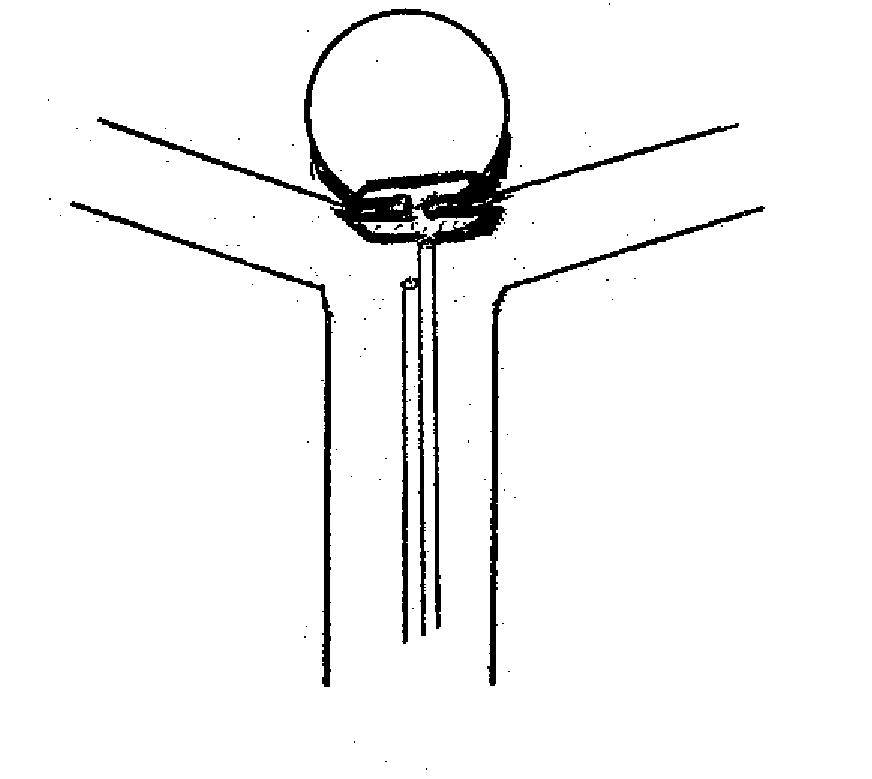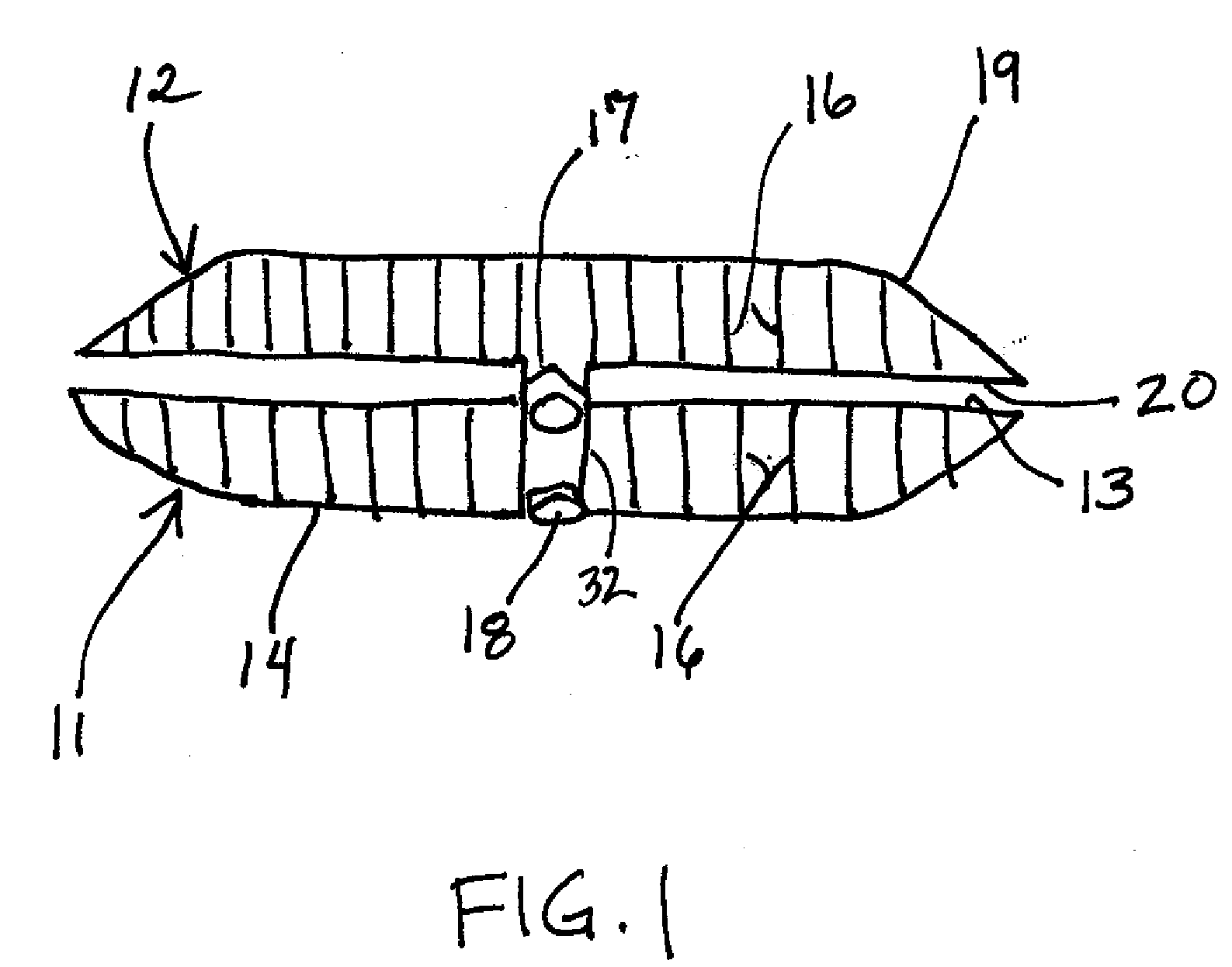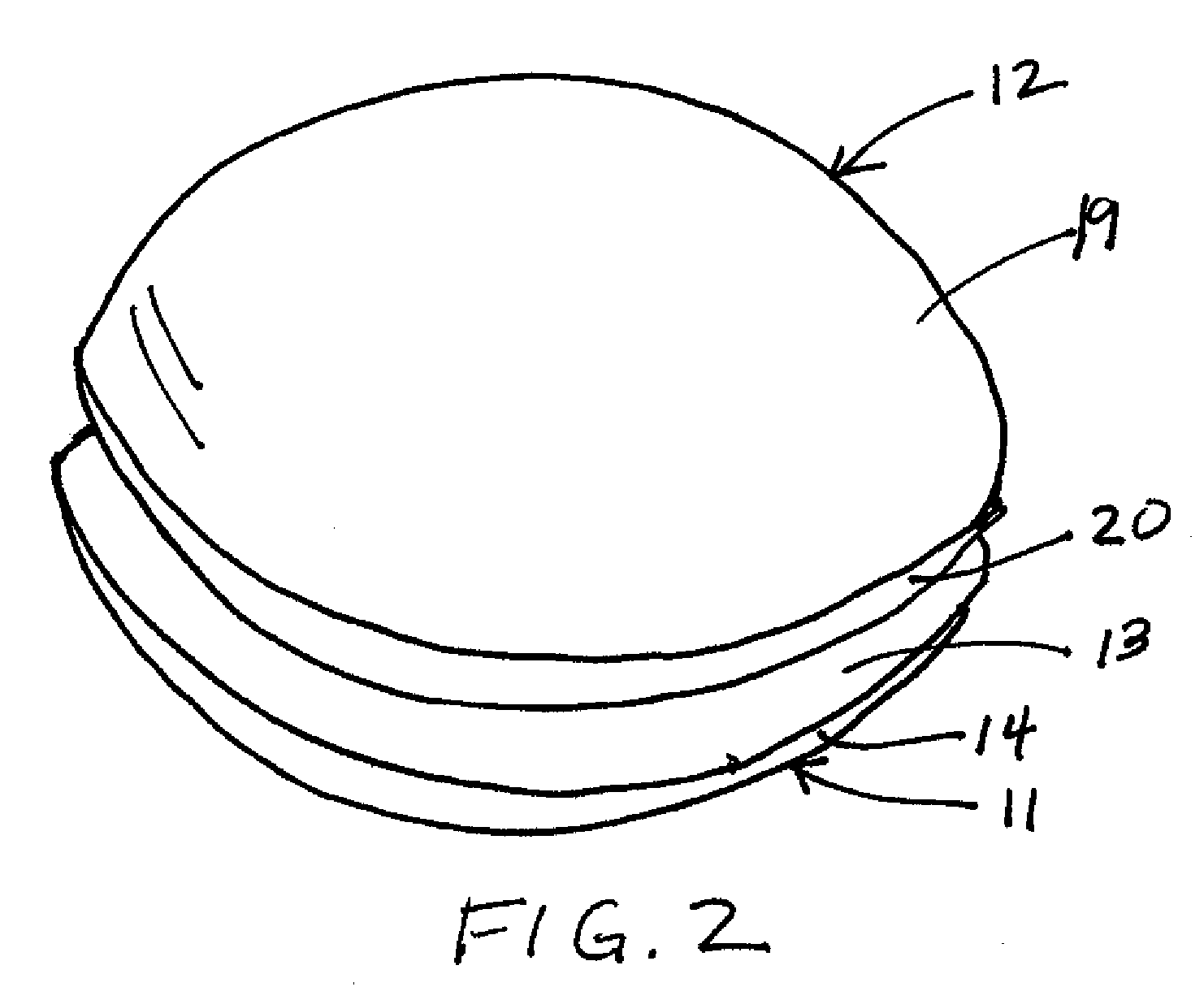Aneurysm sealing device
- Summary
- Abstract
- Description
- Claims
- Application Information
AI Technical Summary
Benefits of technology
Problems solved by technology
Method used
Image
Examples
Embodiment Construction
[0026]Referring initially to FIGS. 1 and 2, a device 10 constructed in accordance with a first embodiment of the invention includes a proximal inflatable disc 11 and a distal inflatable disc 12, which are connected by a channel 32. Proximal disc comprises an inner wall 13 and an outer wall 14. Inner and outer walls 13, 14 are each preferably made of an inelastic material and are preferably constructed of a biocompatible material such as polytetrafluoroethylene (PTFE).
[0027]Similarly, distal inflatable disc 12 comprises an inner wall 20 and an outer wall 19. Like outer wall 14, outer wall 19 is preferably constructed of an inelastic material, while inner wall 20 is preferably constructed of a semi-elastic or resilient material.
[0028]In preferred embodiments, the inner and outer walls of proximal and distal discs 13, 20 are preferably substantially curved so as to form an overall device that is concave when viewed from the distal end, for treatment of bifurcation aneurysms. In alterna...
PUM
 Login to View More
Login to View More Abstract
Description
Claims
Application Information
 Login to View More
Login to View More - R&D
- Intellectual Property
- Life Sciences
- Materials
- Tech Scout
- Unparalleled Data Quality
- Higher Quality Content
- 60% Fewer Hallucinations
Browse by: Latest US Patents, China's latest patents, Technical Efficacy Thesaurus, Application Domain, Technology Topic, Popular Technical Reports.
© 2025 PatSnap. All rights reserved.Legal|Privacy policy|Modern Slavery Act Transparency Statement|Sitemap|About US| Contact US: help@patsnap.com



